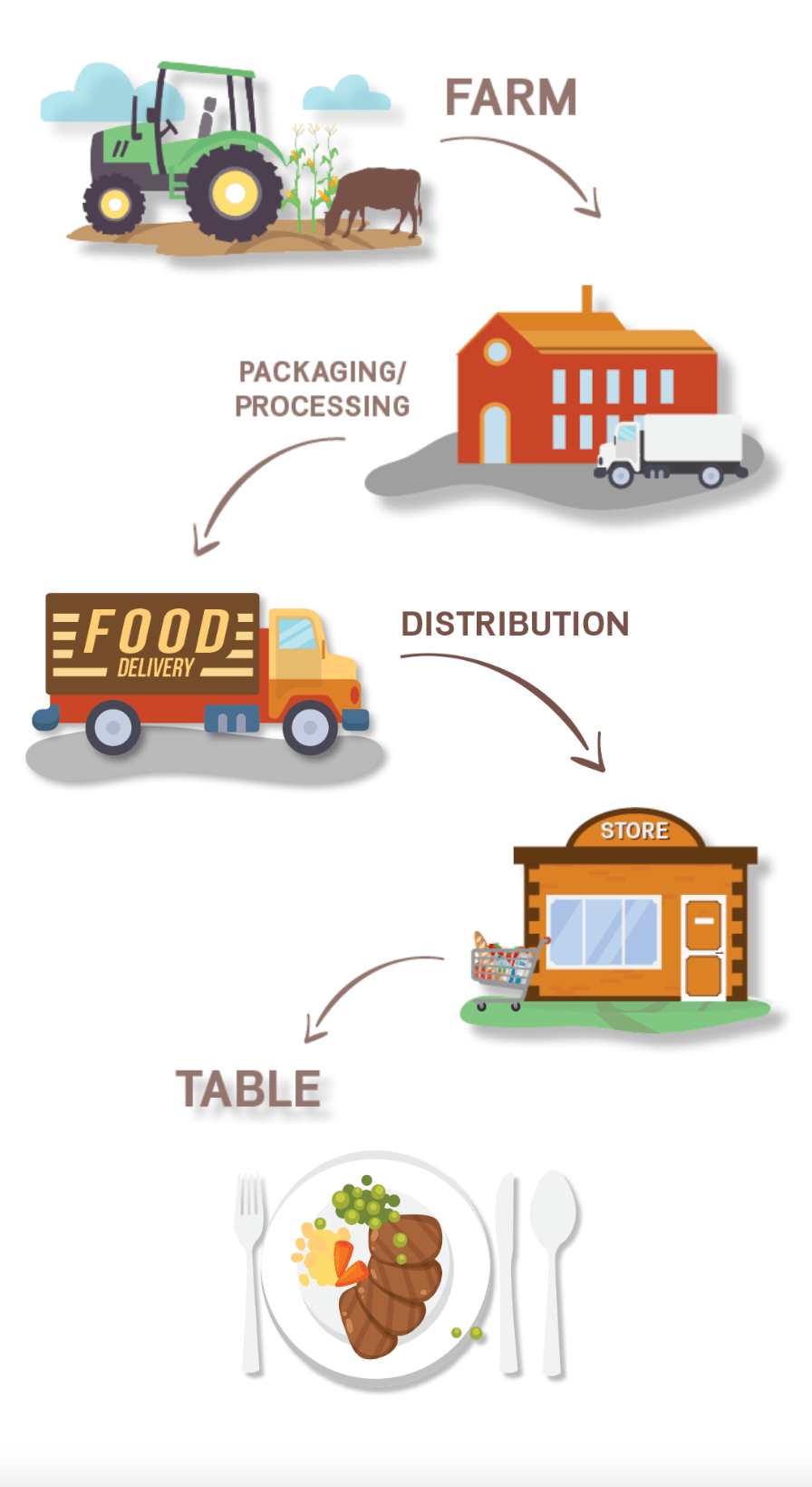While consumers are sometimes able to
purchase food directly from the farmers that
produce it, the majority of food sold in the
U.S. comes from grocery stores.
Beef, pork and other similar products are
processed and packed – then sold wholesale
to grocery stores and other distributors
before consumers are able to purchase them
at retail prices.
As producer-consumer relationships fade,
who is left to tell the story of how food is
grown?
“Farm-to-table” – or “farm-to-fork” – is a growing social movement that promotes serving locally grown food in restaurants and school cafeterias. But it’s not just about proximity. The movement is also driven by an emphasis on food safety, freshness and traceability – or the ability to track where your food came from.


